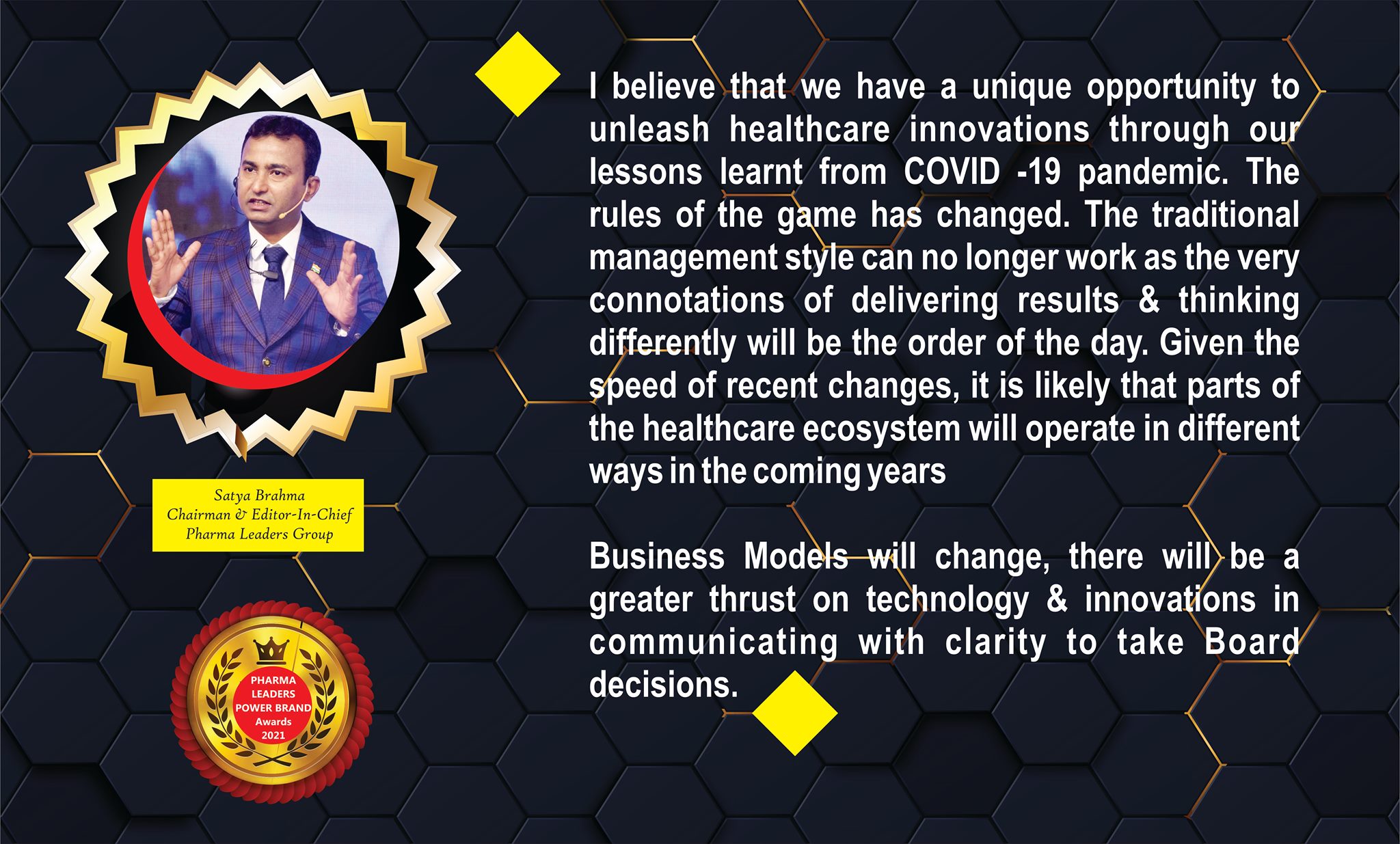It has been widely argued that india is on the threshold of new innovations & has leaders who are world-class. True, India’s potential & prowess as a healthcare leader in the global map is well known but we need few leaders who are visionaries like Steve Jobs.
India needs risk taking healthcare visionaries who can defy odds & set new rules – Satya Brahma
Globally india has emerged as one of most safe bet in investments, innovations & continued growth despite turbulence in other developed countries. Pharmaleaders believe that india’s low cost manufacturing coupled with strong quality manpower pushes india’s healthcare in the top 5 league. To push India into the top five pharmaceutical innovation hubs by 2020, the Indian government is preparing multi-billion dollar investment with 50 per cent public funding through the public-private partnership (PPP) model to enhance innovation capability. India has the advantage of lowest cost of producing goods and good technology. FDA problems for the pharma sector in India were more of cultural in nature and these regulatory hurdles are going to ease in future.India’s healthcare spending is the lowest among BRICS (Brazil, Russia, India, China, South Africa) nations, as are its health indicators.Similarly, most folks find hospitals uncomfortable, even frightening. Both high costs and low satisfaction share a root cause: Poorly designed medical infrastructure.The system is fraught with misaligned incentives. Thus far, we have no design visionary for healthcare, wearing a black turtleneck and forging game-changing brilliance. Millions of indians cannot access India’s overburdened hospitals and inadequate medical facilities, a crisis illustrated by the fact that India is short of nearly 500,000 doctors, based on the World Health Organization (WHO) norm of 1:1,000 population&With more than 740,000 active doctors at the end of 2014 — a claimed doctor-patient population ratio of 1:1,674, worse than Vietnam, Algeria and Pakistan — the shortage of doctors was one of the health-management failures cited by this report of a parliamentary committee on health and family welfare, which presented its findings to both houses of Parliament on March 8, 2016.

Illegal capitation fees in private medical colleges, health-services inequality between urban and rural India and disconnect between the public-health and medical-education systems were among the issues the committee investigated while probing the Medical Council of India, the 82-year-old organisation responsible for medical-education standards.Up to 55% of India’s 55,000 doctors graduate every year from private colleges, many of which charge illegal donations, or “capitation fees”. In Tamil Nadu, it now costs a medical student from such a college Rs 2 crore to get a Bachelor of Medicine and Bachelor of Surgery (MBBS) degree, The imbalances begin with access to medical education.States with nearly half the population have only a fifth of MBBS seats. What, then, will actually drive change? Informed consumer demand. Tomorrow’s patients will expect hospitals to be reviewed just like any other consumer good, empowering decisions based on patient satisfaction. The health consequences of bad design are well understood by providers; soon, consumers will appreciate that connection, too. And when consumer demand leads to implementation of common sense measures that yield better outcomes, higher satisfaction, and lower costs.
Every year, 55,000 doctors complete their MBBS and 25,000 post graduation nationwide, said another unnamed expert. At this rate of growth, he told the committee, India should have a doctor (allopathic) for every 1250 people for a population of 1.3 billion by 2020, and one for every 1075 by 2022 (population: 1.36 billion).
“However, the committee has been informed… that doctors cannot be produced overnight, and if we add 100 medical colleges every year for the next five years, only by the year 2029 will the country have adequate (sic) number of doctors,” the second expert said.
The shortage of doctors, the report said, is despite the increase in medical colleges, from 23 in 1947 to 398 at the end of 2014. India, the report noted, has more medical colleges than any country, and 49,930 admissions were available in 2014.




